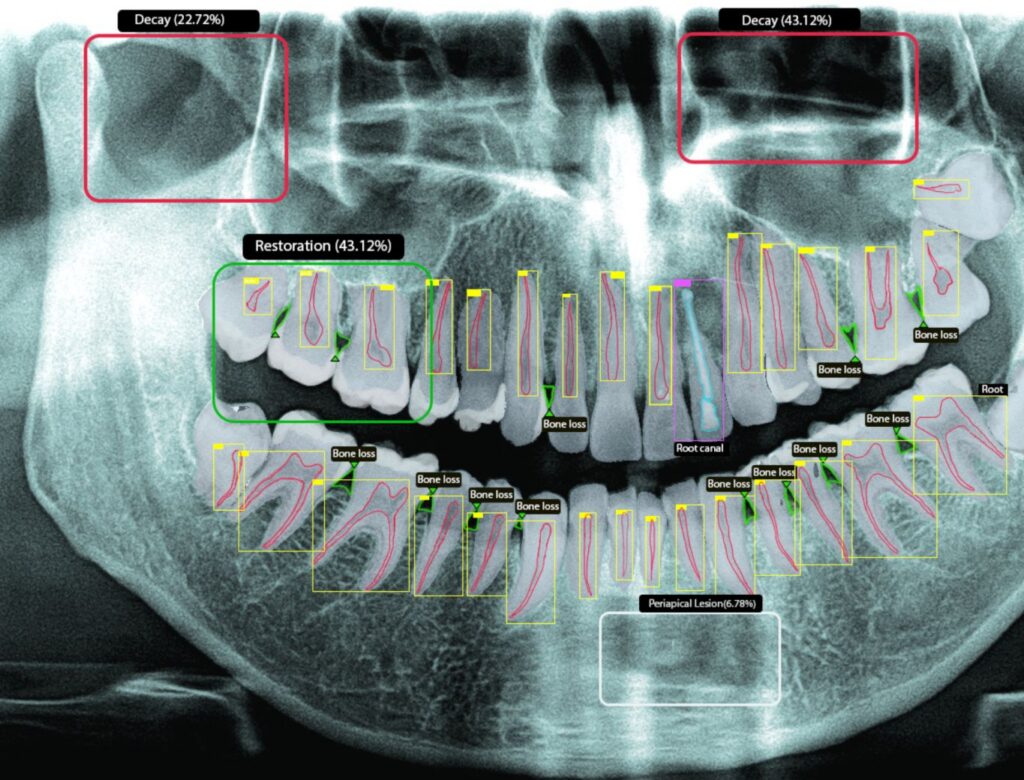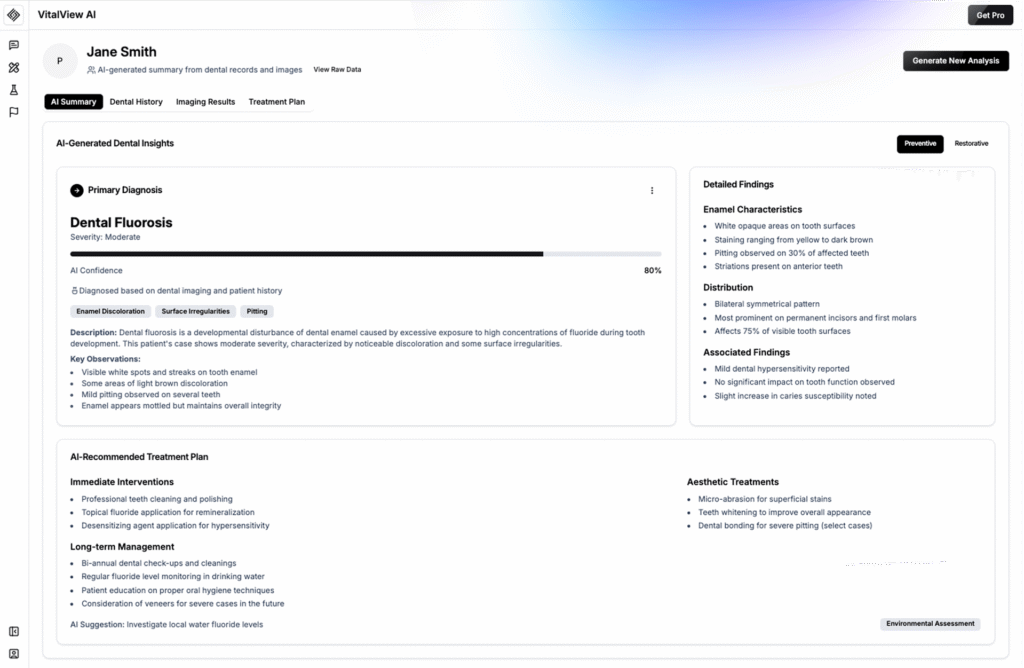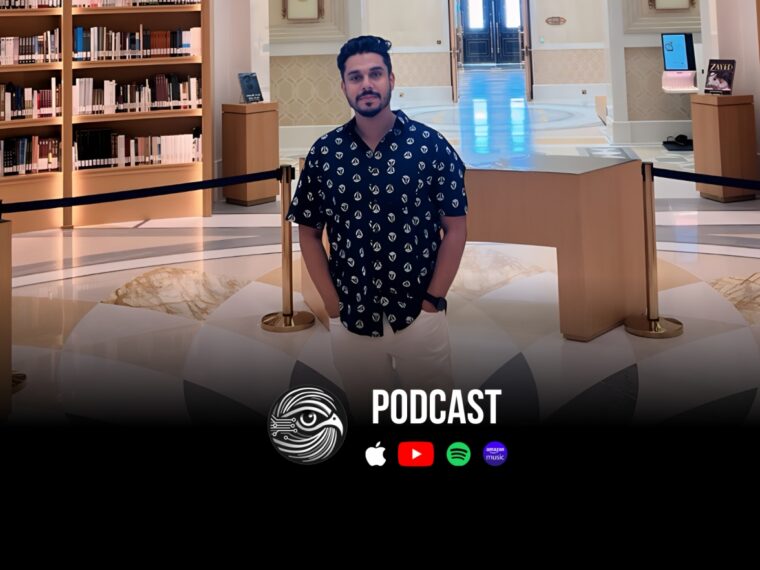Table of Contents
Here’s something most people don’t know about medical imaging – our eyes can only see about 900 shades of grey in an X-ray. There are 65,000.
That’s like trying to read a detailed map in the dark. You’re missing a massive amount of diagnostic information that could change everything. When you examine a CT scan, the problem becomes even more significant. A single scan can contain up to 1,000 individual image slices. This is an overwhelming amount of data for any medical professional. Analysing it consistently and accurately is challenging.
Amal Shehu is the founder of Vitalview AI. He is building a powerful AI platform to tackle a key problem in healthcare. The company’s proprietary technology can analyse what human eyes cannot detect. The platform reveals early-stage conditions. It also uncovers subtle patterns that doctors could miss during analysis.
“An intelligent layer for an invisible spectrum.”
The dental diagnostics opportunity
Vitalvew has chosen to begin with dental X-rays and scans as its first application. This is a strategic move. Dental imaging is less complex than full-body analysis. This allows them to perfect their core technology on a focused problem. This gives them a clear, fast path to market validation, before expanding their deep tech foundation to other fields.
Here’s how it works: A dentist uploads an X-ray to Vitalview’s platform. The AI processes the image and generates a comprehensive analysis report. It flags potential issues like cavities, infections, or bone density problems. This includes subtle signs or early-stage conditions that the dentist may have missed. The detailed insights are delivered in minutes.

The platform doesn’t replace dental professionals. Instead, it helps them see what they might otherwise miss, acting like a second pair of eyes that can detect critical information in those invisible shades of grey.

Building an efficient, next-generation AI
Most AI companies are building massive, power-hungry systems. Vitalview is pursuing a completely different strategy.
Their approach is inspired by biological intelligence. A small bird’s brain consumes only 2 watts of power, which is roughly equal to an LED light bulb. And yet, it enables complex navigation and pattern recognition. Vitalview aims to build AI systems with similar efficiency. This means their technology could eventually operate on standard hardware. We may not need expensive data centres. This efficiency creates a sustainable cost structure that competitors will struggle to match. This allows VitalView to deliver similar results at a fraction of the cost.
“VitalView AI’s approach is built on low compute architecture, a hyperspectral pipeline that captures hidden layers of information, a dentist-first strategy for rapid clinical traction, and automated checks with a doctor-in-the-loop for trusted validation.”
| Problem in current systems | VitalView’s approach |
|---|---|
| Requires massive GPUs and cloud spend | Edge-device architecture, low compute |
| Limited spectrum analysis (visible only) | Hyperspectral pipeline, invisible layers |
| Hospital adoption is slow due to the cost of computing | Dentist-first, faster clinical traction |
| Human error in reports | Automated checks, doctor-in-the-loop |
This is a deep tech company building foundational infrastructure that other organisations will have to rely on for years to come. The development timeline is longer than a typical software startup. However, the potential market impact is much larger.
The technical foundation
Amal Shehu brings serious technical expertise to Vitalview. He spent 10 years building software across many startups. He also completed the intensive Geek School bootcamp in Bangalore. It is a program that accepts less than 1% of applicants. This “military grade” programming training is a testament to his passion. He previously built an AI design tool for Figma that attracted over 75,000 users. This proves he can create applications that solve real-world problems for real people.
Amal does not hire medical experts. Instead, he partners with practising physicians and medical institutions. This ensures that they are building solutions that address genuine clinical needs. It is not another impressive tech demonstration that misses the mark.
Early validation signs
Although VitalView is pre-revenue, several indicators suggest strong market acceptance. They have reached TRL 5* (Technology Readiness Level). This means that they have progressed beyond theoretical concepts and into practical validation.
- They’ve established partnerships with many dental hospitals, including JSS Mysore. Real doctors are evaluating their platform and providing feedback. This has created a continuous loop that strengthens their AI models. At the same time, it helps them build valuable clinical relationships.
- The KSEB (Kerala State Electricity Board) needed a predictive maintenance solution. They stepped in and adapted their technology to analyse machine data. The project took one week from start to finish. They demonstrated the technology’s versatility and rapid deployment capabilities.
- The Kerala Startup Mission has awarded them with a productisation grant. That is funding and institutional validation.
These partnerships help VitalView build unique, specialised datasets of medical images with expert annotations, a valuable asset that will become increasingly difficult for competitors to replicate.
The same core technology could eventually be applied to other complex visual data sets:
- Satellite imagery analysis for agricultural optimisation
- Industrial quality control and defect detection
- Security and surveillance pattern recognition
- Any scenario requiring a detailed analysis of complex visual information
But for now, their focus remains on perfecting medical applications first.
* TRL (Technology Readiness Level): A scale from 1 to 9 that measures a technology’s maturity. TRL 1 is a basic idea or observation, while TRL 9 means the technology is fully deployed and proven in the real world. Reaching TRL 5 indicates the technology has moved from lab testing. They are ready for validation in a relevant environment with actual users.
Watch the full episode with Amal Shehu. It’s a conversation where Amal discusses his journey, his technical background, and his vision for VitalView AI.
VitalView AI is featured in The First Brick series. The series highlights promising early-stage companies.
What are your thoughts on VitalView AI by Amal Shehu? Tell us in the comments below.
Did you read last week’s article on GroYouth, an HR tech aggregator by Sanjev Nagar? Read it here.

